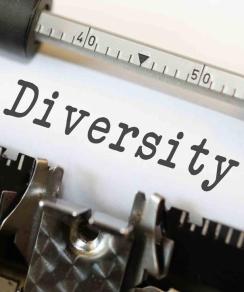I have been engaging in “diversity” work all of my professional life, yet I feel that instead of dismantling the inherently racist and exclusionary system of higher education, my efforts sometimes serve to reaffirm and perpetuate it. One of my mentors used the term “conditional hospitality” to explain how diversity is accepted in higher education institutions—implying that this work is welcomed but only on a conditional basis or under specific conditions. The “host” welcoming diversity is not necessarily an institution or a person, as I originally thought, but rather something less tangible and more abstract in nature … the host is whiteness.
To put it plainly, from the way they are structured to the policies and customs that constitute their existence, our organizations center whiteness—whiteness permeates throughout. Whiteness allows for spaces where diversity conversations and work can take place but always under the guise of the oppressor and under its norms and rules. Diversity, in this sense, is accepted if it is confined and embedded within White organizational cultures and norms.
Spending my entire professional career in higher education, I have been socialized to see and navigate things in a certain manner. At times I’ve resisted this process, and in other instances I’ve embraced it, but the experiences have informed the way I make meaning of the world. If whiteness is what institutions are organized around, then privilege and oppression are not accidental but rather intentional outcomes of habitual and therefore invisible practices. It is within this highly systematic, ingrained, and normalized racism that hegemonic practices that are as ubiquitous as the air we breathe, and as massive and unstoppable as a force of nature, determine what diversity practices are greenlit and which ones are tossed out as “bad” ideas.
If institutions protect whiteness, then it is easy for diversity work to be symbolic."
Colleges are created and sustained through a series of artifacts, values, cultures, and assumptions that move people to produce an institution’s desired outcomes. In this framework, the work of diversity practitioners exists in mission statements, values, committees, or documents that assert an institution’s commitment to diversity. However, this commitment is nested within the already established habits, norms, and conditions of the organization. If institutions protect whiteness, then it is easy for diversity work to be symbolic. Any challenge to the norm is appeased by the same diversity symbols our institutions create. When organizational change happens, it often is championed by an advocate, and typically at the expense of this individual. This champion often navigates habitual and rationalized thinking as well as an organizational structure that may showcase the person as evidence that diversity works, while also restricting the individual to work under a system that seeks to oppress and overwhelm him. These conditions and contradictions of diversity work can lead to burnout and attrition of those who champion this work, thus reaffirming and maintaining the status quo.
As I’ve immersed myself in this world, I can’t help but feel tired at times. These feelings reveal the frustration that some diversity advocates face when engaging in this work. The frustration can seem invisible to others in an organization, only appearing to those who interrogate the institution, its habits, and its customs. In other words, privileged individuals in an organization tend not to see the struggle that diversity advocates face. As I think about shifting my framework, and the language I use to make sense of my work, I resonate with Dr. D-L Stewart’s argument that institutions have used diversity to appease growing concerns of inequities on our campuses, all while avoiding deep institutional changes. In an Inside Higher Ed article titled "Language of Appeasement," Stewart brings to life the lens and limits of diversity work, writing:
Diversity asks, “Who’s in the room?” Equity responds: “Who is trying to get in the room but can’t? Whose presence in the room is under constant threat of erasure?”
Diversity asks, “How many more of [pick any minoritized identity] group do we have this year than last?” Equity responds, “What conditions have we created that maintain certain groups as the perpetual majority here?”
Diversity asks, “Isn’t it separatist to provide funding for safe spaces and separate student centers?” Equity answers, “What are people experiencing on campus that they don’t feel safe when isolated and separated from others like themselves?”
Diversity celebrates increases in numbers that still reflect minoritized status on campus and incremental growth. Equity celebrates reductions in harm, revisions to abusive systems and increases in supports for people’s life chances as reported by those who have been targeted.
I am convinced an institution that seeks to authentically support its underrepresented and racially minoritized students must become aware of how whiteness frames and controls the goals of diversity practitioners. An oblivious institution will continue to perpetuate burnout for those who engage in this work, particularly for practitioners and faculty members of color whose motivations are fueled by a passion for justice and equity. The constant struggle to decenter whiteness and make sense of the various contradictions of this work leaves our staff and faculty of color accountable for the success of our racially marginalized students in an environment that limits their advocacy and overwhelms them with challenges. This perpetual struggle also often leaves underrepresented students alone in navigating an exclusionary and oppressive environment while blaming the same advocates (and the students they serve) when diversity goals are not reached.
Moving forward, I will center the problems I tackle through my work not on the people who are being discriminated against, nor on those who are working to dismantle these practices, but rather on the system—its habits, values, and structures that perpetuate these barriers.
Richard Diaz is an Engaging Excellence in Equity Fellow whoparticipated in convenings designed to identify culturally responsive practices and further support-building evidence and capacity for this work. Learn more about this project.
